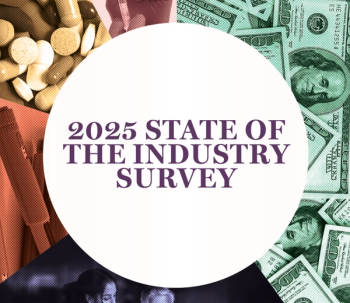
How Health Execs Can Capitalize on Key Trends Shaping 2020
Here are four key takeaways to deal with the outlook on healthcare.
Healthcare leaders maintain positive sentiments for 2020, according to a new report.
The annual North Highland Beacon Industry Trend
Report highlights include:
- Of the 86% of senior business leaders who expect year-over-year growth, 21% predict growth of 10% or more, significantly higher than last year.
- Up from last year, 89% say creating a better customer experience for members and patients is the most essential strategic priority, they believe it’s attainable, and 95% say it will have an extremely high impact on overall competitive advantage.
- Operational efficiency catapulted into the number two position eking out data and analytics (82%) for the first time in several years. While 85% cite it is a major priority, only 7% of healthcare leaders feel very prepared to address this area. And many are concerned about their ability to achieve this.
- Unlike in other industries, leaders cite the greatest threat to addressing top priorities is the workforce. While talent acquisition and development are viewed as top five priorities, they are considered costly and difficult.
Related:
Healthcare organizations are moving beyond planning and impact analyses and are taking action to execute on value-based care models through risk contracting and collaborations with providers and delivery systems, according to Amy Andersen, healthcare industry lead for North Highland Worldwide Consulting, a change and transformation consultancy headquartered in Atlanta.
“These efforts go beyond the initial ACA-driven initiatives and reflect the increased priorities of patient and consumer experience, operational efficiency, and the importance of prevention, social determinants of health and outcomes-based payment trends,” Andersen says.
Consumerism seen in other industries is increasingly seen as a top priority for healthcare, according to Andersen.
“Healthcare consumers are demanding better access options, service, transparency, and efficiency,” she says. “And, state and federal regulations for price transparency and surprise billing are putting more pressure on healthcare organizations to prioritize consumers and make significant changes to business and clinical systems, processes, and access to data and information.”
Data and analytics in healthcare is not a new priority, however there is low confidence in preparedness for 2020, according to the report.
“There is a lack of clarity on priorities and how to utilize data and analytics solutions,” Andersen says. “Healthcare organizations continue to experience challenges in system integration and fully utilizing existing data and analytics capabilities to derive data-driven insights. In addition, the continued proliferation of digital health startups adds to the confusion of how to apply advanced analytics and technologies to drive value in clinical and business operations.”
The continuing consolidation and M&A activity in healthcare adds to the complexity of system and business operations, hindering operational efficiency, system integration, and workforce effectiveness, according to the report.
“When companies are constantly transforming and integrating, the challenge of managing enterprise-wide optimization across people, process, and technology is complex and we feel this may be a factor in the respondents’ reporting a lack of preparedness,” Andersen says.
“This may be due to the missing application of these technologies to business and clinical value,” Andersen says. “While the technologies promise to offer tremendous innovations in leveraging data for predictive and personalized applications, there is confusion and lack of clarity about how to apply these technologies to drive business and clinical value and support investments in technology. We are seeing strong partnerships between vendors and healthcare organizations in this arena, signaling that vendors understand the need to develop strong use cases that will support broader commercialization in the healthcare sector.”
Based on the report, Andersen offers four takeaways for healthcare executives:
- Look beyond the walls of traditional care. “Healthcare organizations should seek to impact or be engaged in every part of the healthcare consumer lifecycle that includes financial experience, retail experience, and social services coordination,” she says. “Social determinants of health continue to be a major priority for the healthcare leaders. Mechanisms to address social determinants require medical, non-medical, and social services interventions that fall outside of the healthcare organization’s traditional scope. Organizations should also consider opportunities to partner with providers and community-based organizations as collaborators in the healthcare ecosystem in order to unlock new sources of product and service innovation and consumer engagement.”
- Extract new insights from data. Companies like Amazon could take rapid market share because of their consumer engagement technology platforms, integrated supply chain, and advance data and cognitive capabilities, according to Andersen. “Healthcare organizations must find ways to aggressively differentiate and utilize the data to unlock insights to drive operational efficiency, clinical improvement, and consumer experience. Using data in new ways will enable product and service innovation and move the needle on customer-centricity.”
- Bring IT to the front office. Automating interchanges and eliminating silos between functional teams enables leaders to design more customer-centric solutions and services, according to Andersen. “Healthcare organizations need to use data and technology to transform the customer experience and engage with consumers in innovative ways and follow the lead from other industries-retail, hospitality, and financial services-to create on-demand and multi-channel methods of interaction,” she says.
- Don’t forget employees and culture. “The key to executing any strategy is people,” according to Andersen. “With great talent in high demand, organizations must place emphasis on attracting and retaining talent through often non-traditional methods.”
If an organization is not actively engaged in improving employee experience and building the capabilities of employees, it may not be able to deliver on key strategic initiatives, she says. “Workforce effectiveness must be built into enterprise transformation and should be a key component of strategic initiatives focused on process and system transformation in order to support successful implementation and build a future state operating model,” Andersen says.
Newsletter
Get the latest industry news, event updates, and more from Managed healthcare Executive.





















































